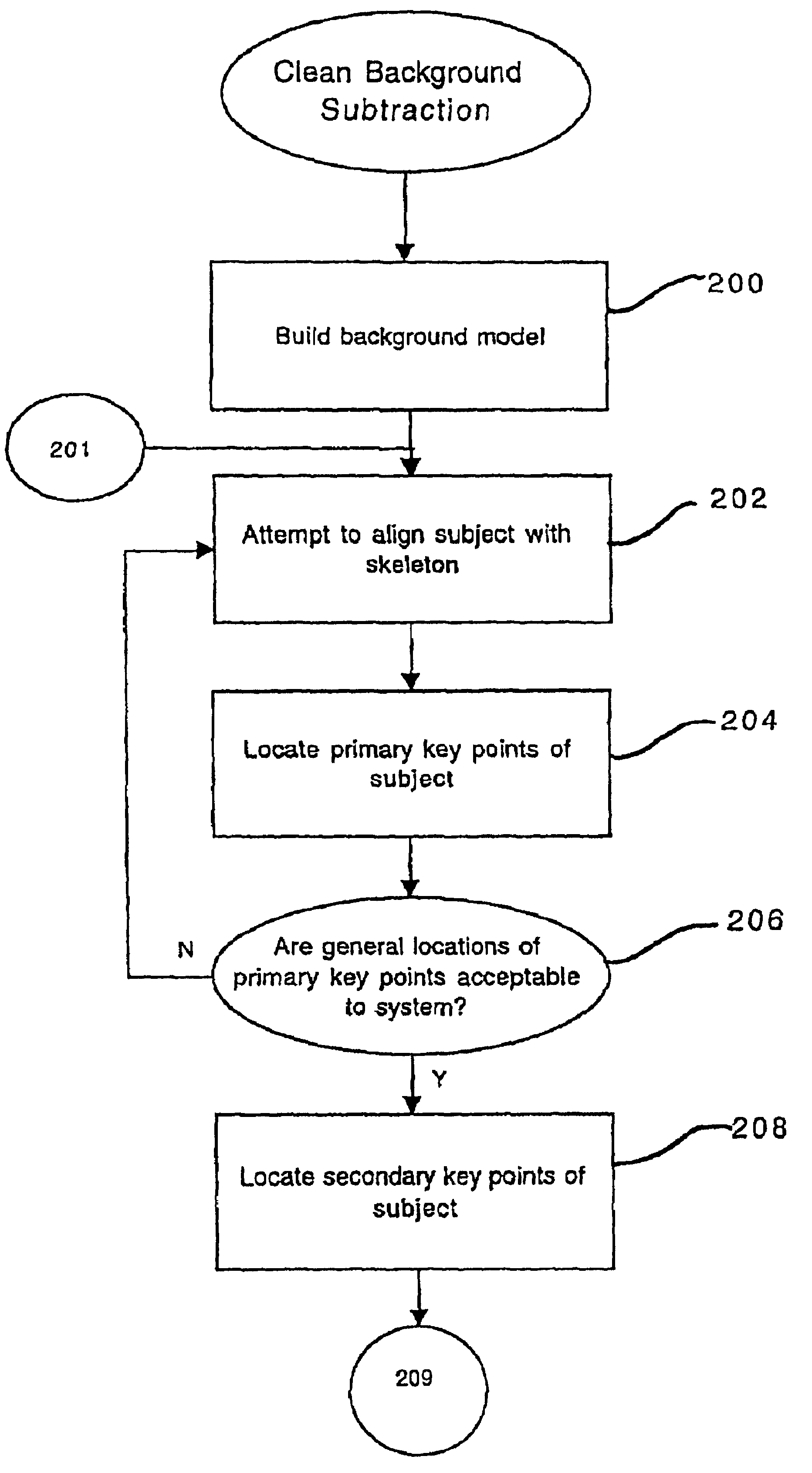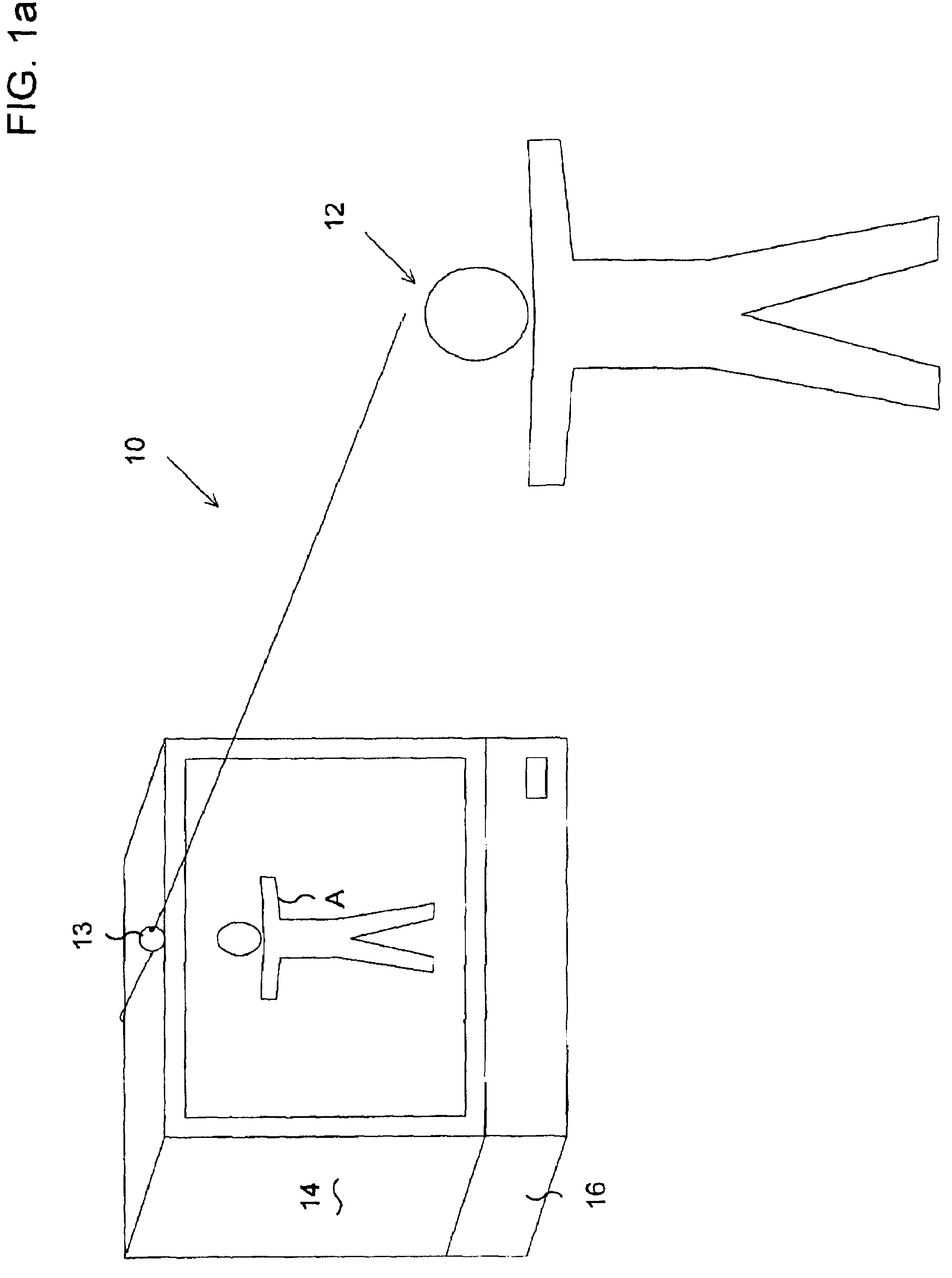Method and apparatus for performing a clean background subtraction
a background subtraction and background technology, applied in image enhancement, image analysis, instruments, etc., can solve the problems of requiring a fixed color screen behind the object, affecting the accuracy of the background subtraction, and the object having holes when composited onto the destination image, so as to improve the accuracy of determining the outline and reduce the noise near the edges
- Summary
- Abstract
- Description
- Claims
- Application Information
AI Technical Summary
Benefits of technology
Problems solved by technology
Method used
Image
Examples
Embodiment Construction
[0018]FIG. 1a is an illustration of an apparatus 10 in accordance with the present invention. A user 12, e.g. a child, stands in front of a camera 13 in a pose in which the arms are extended outwardly and the legs are spread somewhat apart. That is, the child moves to fit herself within a skeleton “A” shown on a video monitor 14. The camera 13 and the video monitor 14 are typically connected to a computer 16, as will be appreciated by those skilled in the art. The computer 16 includes or has access to computer implemented process instructions stored within computer readable media (such as RAM, ROM, magnetic or optical media, over a network, etc.) to perform methods (“computer implement processes”) of the present invention.
[0019]The skeleton A is an outline of an object or figure that is to be digitally removed from its background. When the object or figure is a human being, a preferred skeletal outline is somewhat of a hollow, five-pointed star shape. The “skeletons” described with ...
PUM
 Login to View More
Login to View More Abstract
Description
Claims
Application Information
 Login to View More
Login to View More - R&D
- Intellectual Property
- Life Sciences
- Materials
- Tech Scout
- Unparalleled Data Quality
- Higher Quality Content
- 60% Fewer Hallucinations
Browse by: Latest US Patents, China's latest patents, Technical Efficacy Thesaurus, Application Domain, Technology Topic, Popular Technical Reports.
© 2025 PatSnap. All rights reserved.Legal|Privacy policy|Modern Slavery Act Transparency Statement|Sitemap|About US| Contact US: help@patsnap.com



